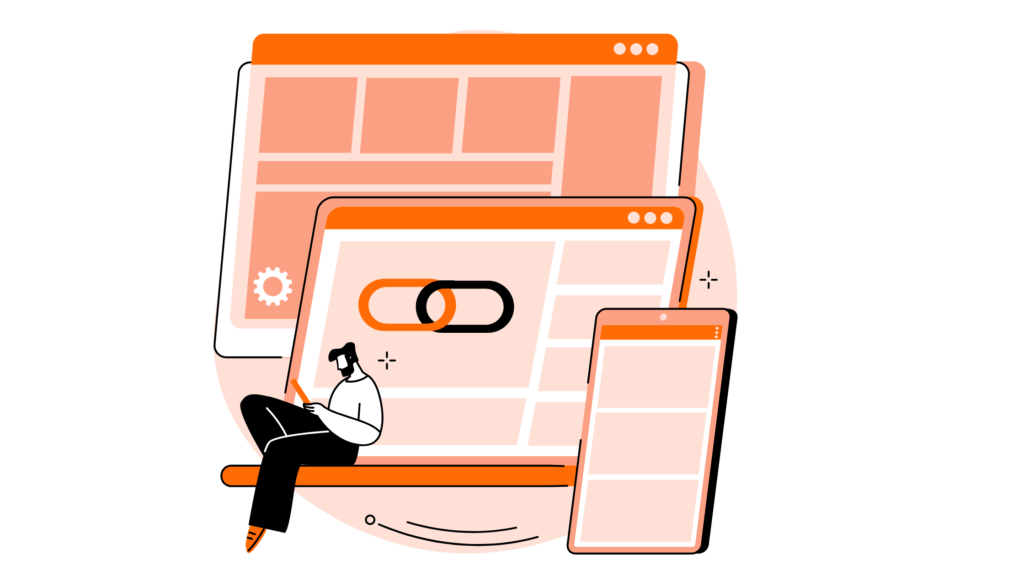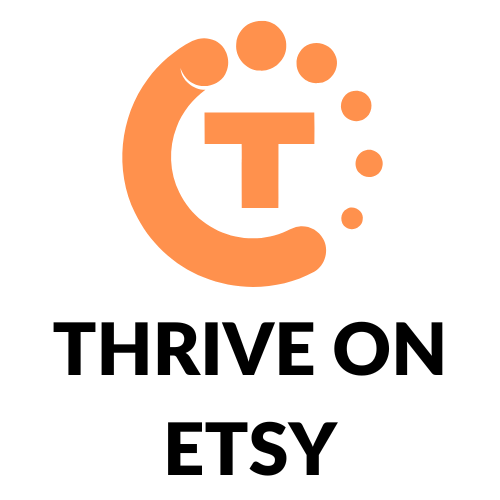For many Etsy sellers, writing product descriptions is one of the least enjoyable tasks when it comes to selling their items online.
Unfortunately, it’s also an essential part of being successful on Etsy!
Never fear: We’ll help get you through the process – even if you aren’t someone who is experienced with E-commerce or copywriting.
In this article, we’ll run through all of the most important steps in creating an excellent Etsy product description.
Let’s get into straight it!
What Is An Etsy Product Description?

Whether you’re an Etsy seller or buyer, you’re probably already familiar with product descriptions.
In short, an Etsy product description is the blurb that appears once you click on an Etsy listing. Normally, these include all of the detailed information about an item that doesn’t fit into the title or images.
This handy bit of text achieves two main objectives.
First, it informs buyers on every aspect of an item they need to know about before deciding to buy.
Second, it helps Etsy’s algorithm properly sort your item and recommend it to the right customers!
Why Are Etsy Product Descriptions So Important?

The two objectives of product descriptions we’ve discussed above make them a vital part of any successful Etsy store. Let’s break them down a bit further.
When a customer clicks on your listing, they already have some level of interest. Their curiosity is piqued by your product!
Now, your focus should shift to convincing them as to why your item would be a good purchase to make.
Why should they spend their money on it? How do they know they can trust its quality?
What makes it better than all of the other options on their Etsy homepage?
That’s where a product description comes in, as it answers all of these questions (and more) for the discerning customer.
For a lot of people, the description is what locks in their final decision to purchase a product.
You should therefore look to make the most of this opportunity! You certainly don’t want your customers floating away to your competitors – or away from Etsy altogether.
We can see this in action when we look at conversion rates. Conversion rates describe the percentage of people who, once on a product page, actually purchase something.
Based on Etsy statistics, products with high-quality, thorough descriptions earn a much higher conversion rate for their store.
Secondly: as of 2022, Etsy now looks for keywords in your descriptions when choosing where to recommend your item!
This means that the words you use here can hugely influence how many people see your listing, translating directly into sales.
For this reason, you’ll want to learn how Etsy’s algorithm makes these decisions, and how you can use this to your advantage.
How To Write An Etsy Product Description: Best Tips And Practices

Let’s break down the most important parts of writing a good description – one that makes both your customer and Etsy’s algorithms happy.
1. Establish A Consistent Brand Voice
It’s incredibly important to establish a consistent voice when writing your Etsy product descriptions. This voice will convey the personality of your store, drawing in your customers and earning their loyalty.
This can sometimes be difficult to balance and depends heavily on the exact content and style of your store.
As a general rule, it’s best to use a first-person perspective when writing your descriptions. This means using “I” or “we” when describing your item, for instance, “We make our bracelets with love and care”.
Though it can be tempting to use more indirect language, using this personal tone helps to build a feeling of connection with your reader.
It allows you to feel like a real person to them, rather than a corporate entity. When people shop on Etsy, they’re looking for that connection to an artist! You should work to reinforce this feeling in your descriptions.
A great way to do this without obscuring your main information is with a single, catchy opening line.
This can be where you make a joke, pun, or otherwise say something funny, interesting, and charming to hook your reader in.
For instance, maybe you’re selling a blue sweater. You could start with, “Feeling blue? We can help!”
Do your best to reflect your personality in your store’s voice, since this is what you’ll be able to represent the most genuinely. Have fun and try to connect with your audience!
2. Know Who You’re Talking To
Make sure you consider your target audience when you’re setting up an item page.
You should have a decent idea of this for your entire store so that you know exactly who will be reading your descriptions down the line!
This becomes easy if you’re making items for a target audience that you fit within. This means you can effectively sell to yourself!
Think about what you like to know about an item and how you like to be spoken to online, and include this in your own writing.
If you aren’t sure of your target audience, there are a few questions to ask about your products that can help you figure it out.
First, who is most likely to buy your product? Women or men? Younger or older people? Parents, couples, or single people?
Next, consider what your product is used for. Is it part of a specific hobby? Is it bought as a gift? What kind of gift, and for whom?
Find products that sell to a similar audience, on Etsy or any other website. Read what kind of language they use.
Most of all, use common sense! For example, if you’re writing for an audience of young people, they probably won’t like uptight, ultra formal language.
3. Optimize Your Titles And Tags
SEO (Search Engine Optimization) is a huge part of any e-commerce business. Unfortunately, Etsy is no different.
Make sure you think about the important keywords related to your item – what would people search for if they were looking for it? Include these in your title, tags, and in the first section of your description.
According to Etsy’s guidelines for optimizing your ranking, your title should be between 70 and 120 characters. Ideally, you’ll include 13 tags, none of which should repeat. High-quality tags are a few words that match well with what you’re selling!
4. Be Compelling, But Honest
When you’re writing a product description, you’re first and foremost convincing the viewer to buy your product.
However, you don’t want to become so invested in this salesmanship that you become dishonest.
Yes, getting someone to buy your product is important. However, if they buy it and find your promises weren’t entirely true once it arrives, it will reflect badly on your store (and result in bad reviews).
You should hype up your item, explain exactly how it’s great, and point out its best features.
Just make sure you are honest while doing so! You want your customers to build trust in you and your store, making it more likely for them to return or recommend you to others.
Use your brand voice, and be unique and friendly while still maintaining a professional tone overall. You’re not the buyer’s friend, but you should feel relatable to them.
5. Being Descriptive Is Important (Remember, Buyers Can’t Physically See The Product)
When we buy something, most people like to feel, touch, hold, and try on the product before we make a purchase.
Of course, this isn’t possible when you’re buying something online.
You should do your best to emulate this feeling as much as possible while describing your item.
Try to paint a picture of the product in your readers’ minds, as if they were holding it themselves. Talk about how it feels, its surface and weight, how it reacts to light, and its color and texture.
If you’re selling clothing, talk about what it feels like to wear it! Maybe a sweater feels like a big warm hug, or so loose and light that it’s like you aren’t wearing anything at all.
Your first few sentences should contain all of the most important features of the item. This is for the people who don’t tend to read lengthy descriptions to ensure sure they get the most important information, fast.
Make sure to emphasize the unique features and selling points of your item, and what makes it special. Talk about what it will do for your buyer as well as why they should get it. Why can’t they live without it any longer?
Imagine what you’d like to know as a buyer. Describe your item as if no pictures of it are available!
6. Address The Buyer
This is a really important part of connecting with your customers in a way that feels genuine and personal.
When writing your description, address the buyer specifically as if you’re talking to them in a normal conversation.
This means using the word “You” as much as possible!
Be polite, genuine, and friendly. Make them feel comfortable and at home, establishing yourself as a trustworthy person to purchase from. Help them fully understand the available product.
A great way to connect to your reader is to understand what problem your item might solve for them.
For instance, this problem could be something as simple as “What do I get for Mom’s birthday?”, or “How do I keep the kids entertained this weekend?”
Identify these problems that your buyer is likely to have, and explain how your product solves them neatly and conveniently.
7. Keep It Straightforward And Concise
This is probably the most important thing to keep in mind while you’re writing your description.
When people are browsing Etsy, they probably don’t want to read a wordy novel on every product page.
Keep your sentences short. Make sure you include all relevant information but avoid the fluff and flowery language where possible.
Of course, some friendly, casual extras are nice, but even these should be kept under control.
Avoid jargon. Keep in mind that your customers will come from a range of backgrounds and skill levels. At the very least, explain the jargon as soon as you use it!
Bullet-pointed lists are a great tool for achieving concise writing. You can even use emojis instead of bullet points if you want to lean into a more friendly, playful tone.
In these lists, make sure to keep bullet points short. You want customers to be able to glean all the important information they need as quickly as possible and not have to hunt for it in long paragraphs.
For each sentence, go back through and think about whether there is a way to word them more concisely. Your descriptions should be tight and efficient. Be ruthless in pruning unneeded words!
8. Have A Link Or Call To Action At The End
You should always have some sort of Call to Action at the end of your description to spur your customer to take that last step of placing the item in their cart.
If they’ve read all of the description and still haven’t made their decision, this is your one last chance to prod them before they drift off.
It’s also a good idea to add a call to action for them to visit the rest of your store or to take a look at other items you sell that match the one they’re currently looking at.
For instance, if they’re looking at watercolor paper, you might include links to things like watercolor sets, brush holders, brush sets, and other related equipment.
Do this with a quippy call to action, such as,
“If you like this, our brush sets work perfectly with it! Check them out here!”
9. Monitor Your Data
You should always be paying attention to data when you’re running an Etsy shop.
This can be done pretty easily with Etsy’s built-in monitoring tools under their Shop Stats section. This allows you to view where your traffic comes from, how people engage with your items, and your conversion rate.
You should use this information to create a list of keywords that people use to find your items. Then, use these keywords often when writing your titles, tags, and descriptions.
You can even experiment to find the best methods!
Write several templates for descriptions and rotate between them periodically. Keep an eye on your statistics as each template is used, noting which is most successful. Then, use the highest-converting one going forward.
You want to make sure that you’re always using the best methods for improving your shop’s visibility and popularity. This can often be as easy as switching around some keywords, so don’t let poor SEO hold you back!
10. Be Complete With Information (Packaging, Shipping, Etc)
Once you’ve explained all of the main features of your item, also make sure to include a section on extra information needed for a buyer.
This includes things like a description of the packaging, shipping times, dimensions, gift wrapping, custom notes, and anything else that a buyer might need to know before purchasing.
Do your best to make this as detailed as possible! Not everyone will read it all, but some people like to know as much as possible about an item before they spend any money.
Including information about shipping, returns, and packaging also helps to build trust with your buyers. They will appreciate you being transparent and prepared in regard to these aspects.
It’s particularly important to include accurate dimensions. We all know the feeling of ordering something online – only for it to arrive and be a completely different size from what we expected!
Ideally, you should include some information about scale clearly visible in the item’s images.
Finally, make sure to check all of your information’s accuracy frequently – especially if you work with a manufacturer.
You don’t want to find that you misread a document or that your manufacturer updated their processes without you realizing. Having inaccurate information all over your product descriptions is a surefire way to a lot of returns and poor reviews.
11. Include FAQs
Including a small FAQ section at the end of your description is helpful for both you and the buyer.
For the buyer, it lets them quickly see all the information they need without having to contact you directly. They can decide quickly whether the item suits their needs or not.
For you, it avoids the barrage of 20 people asking the same question about an item. This frees up your time and is far less tedious.
In short, add an FAQ section! It’s easy to do and a huge time saver.
It also increases your sales and conversion rates, since customers that might have clicked away when wondering about a feature of the item can have their questions answered instead.
It would be best to build your questions based on what you’re asked a lot by customers. However, here are a few examples to get you started:
- Do you offer personalized messages?
- What shipping upgrades are available?
- Can you ship by a certain date?
- Do you do custom orders?
Examples Of Good Etsy Product Descriptions

Let’s take a look at some existing Etsy product pages and break down their descriptions using these guidelines.
All of these pages are for extremely popular items.
Ear Jacket Earrings
Straight away, this listing has all of the important keywords in its title and early on in its description.
It also has a great breakdown of the most important features in a bullet point list, front and center.
It includes descriptions like “Best Friend Gift” and “Gift For Her”, helping customers know what problems this item would solve.
They have a link to their shop partway through, and the detailed material information is further down for those who are interested.
An in-depth processing and shipping section helps to break down all of the important things a customer might want to know about ordering and receiving this product. It also explains how to contact the seller for alternate shipping options.
Finally, an FAQ section is placed at the very bottom to explain some of the miscellaneous questions a buyer might have about the product.
It ends with a friendly Thank You message, helping to build trust and rapport with the buyer!
Be Mine Sweatshirt
This listing has a list of keywords right off the bat, including ones like Couples Gifts and Valentine’s Day to help establish what problems this item solves.
The tone in this one is much more friendly and casual than the earrings, with emojis and casual language that speaks directly to the reader. This reflects the nature of the products (fun Valentines Day clothing).
The use of emojis instead of bullet points helps to reinforce this fun tone. They open with a friendly greeting, followed by a concise list of the most important features of the item.
Next, they include step-by-step instructions on ordering the product, including how to navigate all the customization options. This helps customers to be more confident in their purchase.
The inclusion of care instructions is especially important for items of clothing. Here, the seller describes exactly what materials the clothing is made of – exuding honesty and transparency in the process.
Their last section is a detailed explanation of shipping, packaging, processing, and returns policies.
Set of 6 Bird Pun Coasters
Finally, this is another product that is fun in nature, placing cheeky innuendos and bird puns as their focus. For this reason, the seller writes in a friendly, fun tone of voice that plays on this item’s content.
The beginning is a super concise description of exactly what the product is, followed by a more in-depth description that explains some of the more granular features.
They include what problems the item solves, explaining that it makes a great addition to an office or dining room table, and is a great present for bird watchers or those with a good sense of humor.
They include the fact that their product is sustainably sourced and eco-friendly.
The seller also goes in-depth into exactly what the coasters are made of and their care instructions – all helping to build trust with the reader.
Next, they link to pages where the coasters are available individually, which is a great solution for customers who weren’t sure about buying a whole set. It results in the seller still retaining a sale, even if it’s only for a single coaster!
The packaging is described in detail, which is especially good for a product often used as a gift.
They end their description with a call to action and a link to their Etsy store, helping to drive traffic and sell their other items as well.
Template
Based on these examples (and what we’ve discussed in this article), we can build a basic template you can follow when writing your own Etsy descriptions.
This isn’t a perfect template for everyone. It depends on your brand and what you’re selling, but it might be a good start if you’re intimidated by the process of writing!
- Start with a snazzy introduction sentence to hook people in – maybe with a pun, joke, or friendly comment.
- Then, follow with a few short sentences describing the most important features of the product. This can be in bullet-point format for easy readability.
- It’s time for a more in-depth description that includes all of the item’s features and details. Imagine you’re describing the item to someone without any images!
- Use “it will” statements, explaining what the product will do for the buyer. What problems will it solve? What functions will it serve for them? Why is it so great?
- Round things up with a short FAQ including the most common questions customers might have about the products.
- Make sure to include extra information about measurements, instructions, cleaning, and disclaimers. This is also where you’ll talk about packing, shipping, returns, and other important policies that a buyer might need to know.
- Finally, end with a Call To Action and link to your Etsy store as well as other similar or complementary products!
Final Thoughts On Writing Etsy Product Descriptions
In the end, you’ll probably find your own unique way of writing Etsy descriptions that works for and your products.
Every store is different! Yours will have its own needs, target audience, and style that will impact your writing techniques.
If you were nervous about writing product descriptions, hopefully this article has given you a boost.
Now you know exactly how product descriptions work, why they’re so important, and how to write them effectively. Good luck and happy selling!

